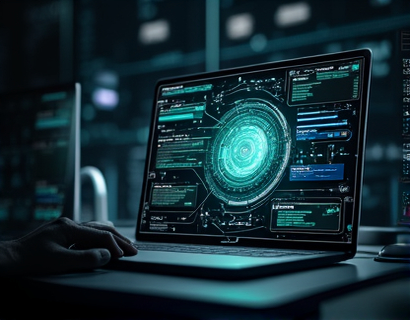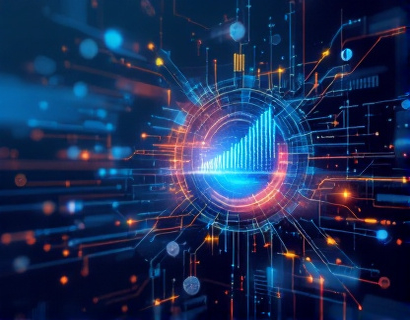Unlocking Digital Efficiency: Harnessing AI and Crypto for Next-Gen Productivity and App Accessibility
The integration of Artificial Intelligence (AI) and cryptocurrency is revolutionizing the digital landscape, offering unprecedented levels of productivity and app accessibility. This article delves into the innovative applications that are redefining task management and app accessibility, tailored for tech enthusiasts and early adopters eager to embrace digital transformation. By exploring the synergy between AI and cryptocurrency, we can unlock new potentials in the realm of digital efficiency.
The convergence of AI and cryptocurrency is not just a technological curiosity but a practical solution to some of the most pressing challenges in digital productivity. AI brings intelligent automation, predictive analytics, and enhanced user experiences, while cryptocurrency provides a secure, decentralized, and transparent framework for transactions and data management. Together, they create a powerful ecosystem that can significantly enhance how we manage tasks and access applications.
AI-Driven Task Management
AI has transformed task management by introducing intelligent tools that can predict, automate, and optimize workflows. One of the key applications is in the realm of smart assistants, which use natural language processing (NLP) to understand and execute complex commands. These assistants can manage schedules, prioritize tasks, and even anticipate user needs based on historical data and patterns.
For instance, an AI-powered task manager can analyze a user's daily routine and suggest the most efficient way to allocate time for different activities. It can also integrate with calendars, emails, and other productivity tools to create a seamless workflow. By leveraging machine learning algorithms, these tools continuously improve their recommendations, adapting to the user's evolving preferences and work style.
Another innovative application is the use of AI in project management. AI-driven project management platforms can monitor progress in real-time, identify potential bottlenecks, and suggest corrective actions. These platforms can also automate routine tasks such as report generation and status updates, freeing up valuable time for team members to focus on more strategic activities.
Enhanced App Accessibility through Blockchain
Cryptocurrency and blockchain technology are playing a crucial role in enhancing app accessibility. One of the primary benefits is the creation of decentralized applications (dApps) that operate on blockchain networks. These dApps offer several advantages over traditional centralized applications, including increased security, transparency, and user control.
For users, this means greater autonomy over their data and applications. Blockchain-based identity verification systems can ensure that only authorized users access sensitive information, reducing the risk of data breaches and unauthorized access. Additionally, smart contracts on the blockchain can automate and enforce agreements, ensuring that all parties adhere to the terms without the need for intermediaries.
Accessibility is further enhanced through the use of cryptocurrency for in-app purchases and microtransactions. Traditional payment systems often involve high transaction fees and long processing times, which can be a barrier for users. Cryptocurrency transactions, on the other hand, are typically faster and more cost-effective, making it easier for users to access and utilize apps without financial hurdles.
Decentralized Identity and Privacy
Decentralized identity solutions powered by blockchain technology are revolutionizing how users manage their digital identities. Unlike centralized systems where a single entity holds all user data, decentralized identity allows users to control their personal information. This not only enhances privacy but also gives users more power over how their data is used and shared.
AI can complement decentralized identity systems by providing advanced encryption and authentication methods. For example, AI-driven biometric verification can offer a secure and convenient way to authenticate users without relying on passwords or traditional identification methods. This combination ensures that user data remains secure while providing a seamless and user-friendly experience.
Tokenized Incentives for Productivity
Another innovative approach is the use of tokenized incentives to motivate and reward users for completing tasks and contributing to the ecosystem. By issuing tokens that represent value within the platform, developers can create a gamified experience that encourages active participation and engagement.
These tokens can be used to unlock premium features, access exclusive content, or even traded for other cryptocurrencies. The use of AI in managing these token economies ensures fairness and transparency, preventing fraud and ensuring that rewards are distributed based on genuine contributions. This not only enhances user motivation but also fosters a sense of community and collaboration.
Scalability and Interoperability
One of the significant challenges in the adoption of AI and blockchain solutions is scalability and interoperability. As the number of users and applications grows, it is crucial to ensure that the underlying infrastructure can handle the increased load without compromising performance. AI can play a vital role in optimizing network resources and predicting potential bottlenecks, allowing for proactive scaling solutions.
Interoperability between different blockchain networks and AI systems is also essential for creating a seamless user experience. Standards and protocols such as InterPlanetary File System (IPFS) and Atomic Swaps enable different platforms to communicate and exchange data efficiently. AI can further enhance this by providing intelligent routing and data management, ensuring that users have smooth and fast access to the applications they need.
Future Prospects and Challenges
The future of digital efficiency through AI and cryptocurrency is promising, but it also comes with its own set of challenges. One of the primary concerns is the regulatory landscape, as governments around the world are still grappling with how to regulate these emerging technologies. Clear and consistent regulations will be crucial to foster innovation while protecting users and maintaining market integrity.
Another challenge is the technical complexity involved in integrating AI and blockchain solutions. Developers need to possess a deep understanding of both domains to create robust and efficient systems. However, as the ecosystem matures, more tools and frameworks will become available, making it easier for developers to build innovative applications.
Education and awareness are also key factors in the widespread adoption of AI and cryptocurrency. Tech enthusiasts and early adopters play a vital role in driving this change by experimenting with new solutions and sharing their experiences. By fostering a community of learners and innovators, we can accelerate the adoption of these transformative technologies.
In conclusion, the combination of AI and cryptocurrency is opening up new frontiers in digital efficiency, productivity, and app accessibility. By leveraging the strengths of both technologies, we can create a more intelligent, secure, and user-friendly digital world. As we continue to explore and innovate, the possibilities are endless, and the future looks brighter than ever.










































